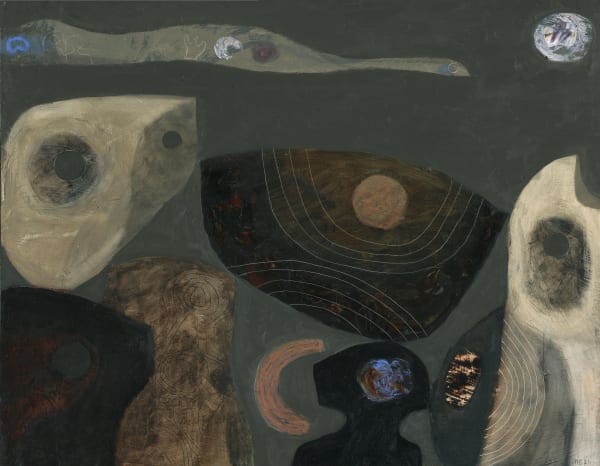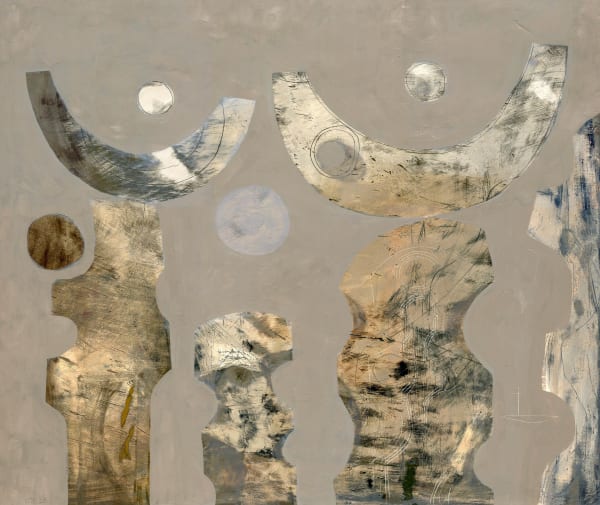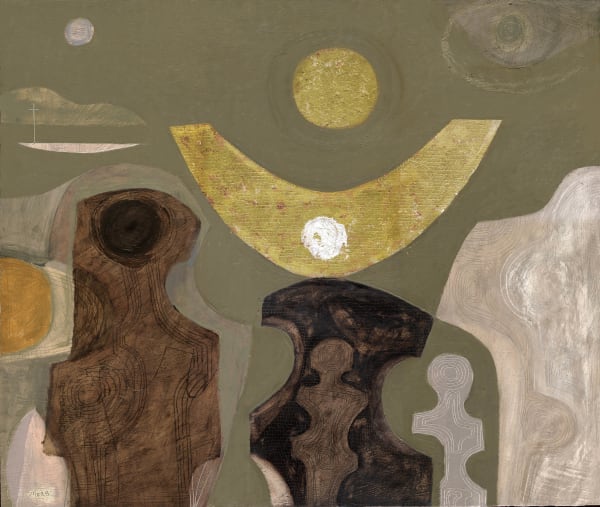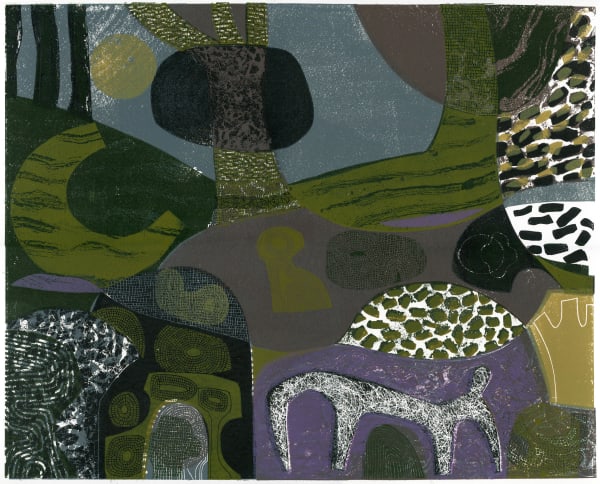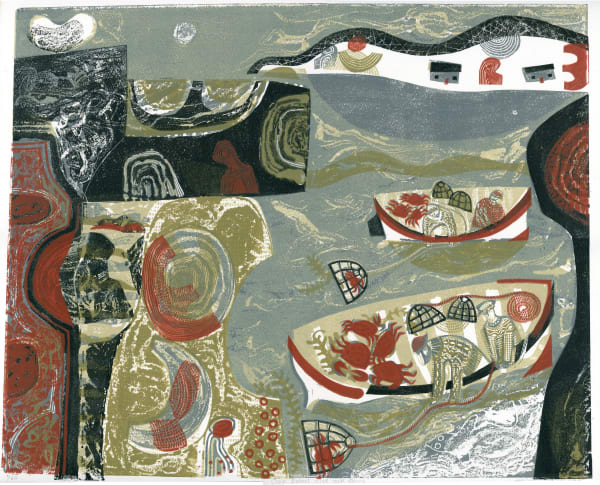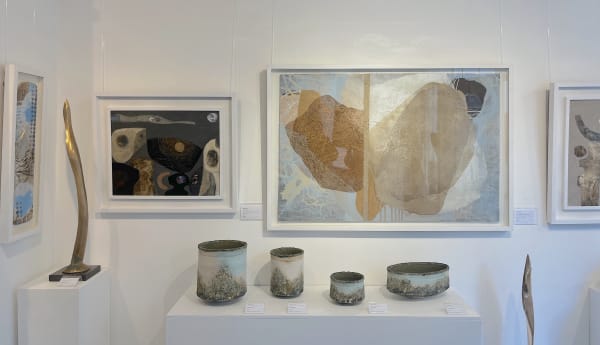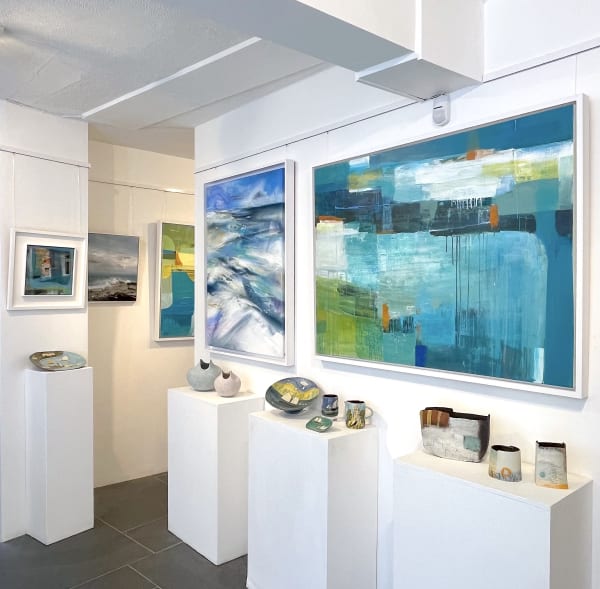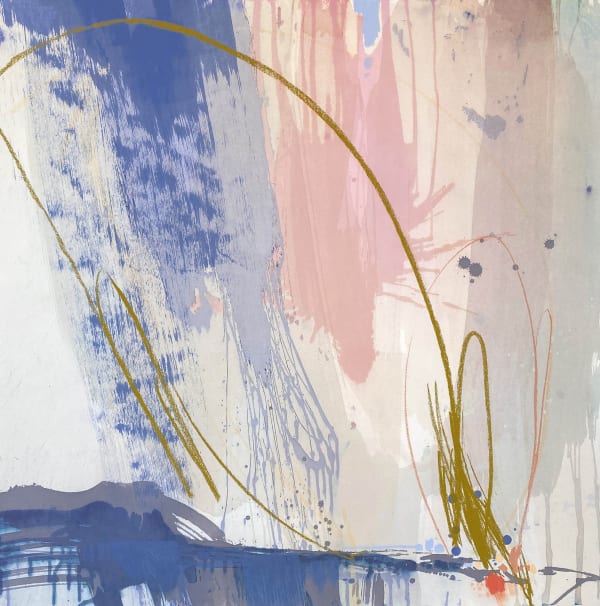Melvyn Evans b. 1958
"I am inspired by the British landscape and my work references the past in relation to the future. When my father left the Navy we farmed a hill farm in West Wales. Working on the land brought me very close to the elemental in the landscape, able to see through the picturesque and understand how deep connections and bonds are formed when we live in harmony with the land. This exhibition is very much about this connection, how we've marked the landscape for millennia with walls, boundary stones, ancient trees, carvings and markers."
"I'm interested in how communities navigated their landscape using these local reference points often giving them characteristic names some of which have now lost their meaning but all give us an insight into the past. I'm also interested in how our understanding of the landscape as being permanent has recently altered, we have moved from being in awe of the landscape to being able to influence the landscape in such a way as to produce irreparable change. The stumps of great forests fossilised and exposed at particularly low tides give us a glimpse of lost causeways like Doggerland hinting at previous upheavals and give us an understanding of the fragility of the landscape we know."
If there’s one thing the work of Melvyn Evans conveys it’s his love for the British countryside. Through the considered use of colour and shape, his paintings and lino prints embody a sense of place while exploring the bond between human endeavour and the landscape’s dramatic, natural backdrop.
Initially trained as a marine engineer – spending time working on submarines – Melvyn Evans studied illustration at Exeter College of Art and Design, followed by a year at Goldsmiths College, London. He then took up drawing classes at the Royal College of Art under the tuition of Bryan Kneale RA. He became a professional artist, printmaker and illustrator in 1992. Evans has developed a signature style of strong, bold imagery, with inspiration coming from artists such as Edward Bawden, Eric Ravilious, Henry Moore and the St Ives School. His work has been widely exhibited throughout the UK, including at the Royal Academy, the Royal College of Art and Somerset House.
-

LIMITED EDITION | Original Artists' Prints
12 Feb - 23 Mar 2024Selling show of original artists' prints for sale by contemporary and modern St Ives and British artists: Melvyn Evans linocut prints; Trevor Price relief engravings and etchings; Sally Spens etchings: Albert Irvin; Ben Nicholson: David Hockney; Patrick Heron; Sandra Blow; Barbara Hepworth.Read more -

WHERE ROCKS BECOME SEA | Autumn–Winter Show
4 Nov 2023 - 6 Jan 2024Gallery show of contemporary art for sale, featuring new paintings by artists Sara Dudman, Masako Tobita, and ceramics by Peter Hayes, Charlotte Jones, Mitch Pilkington, Antonia Salmon, Paul Wearing, and prints by Melvyn Evans and Trevor Price, and sculptures by Tommy Rowe and Michael Thacker. With supporting works by leading 20th Century modern artists: Terry Frost, Barbara Hepworth, Victor Pasmore and Joe Tilson. Artworks also available for sale by St Ives and British Artists: Wilhelmina BARNS-GRAHAM, Peter BLAKE, Sandra BLOW, Patrick CAULFIELD, Lynn CHADWICK, Maurice COCKRILL, Terry FROST, Barbara HEPWORTH, Patrick HERON, David HOCKNEY, Bryan INGHAM, Albert IRVIN, Margaret LOVELL, Henry MOORE, Ben NICHOLSON, Victor PASMORE, Bryan PEARCE, Tommy ROWE, William SCOTT, Joe TILSON.Read more -

SAFE HARBOUR: SUMMER COLLECTION: 1
2 Jul - 24 Sep 2022Welcome to the first of a two-phase uplifting and enervating curated Summer show featuring fresh, new artworks by eight leading award-winning contemporary artists. Celebrating the joys and beauty of summertime...Read more -

FIRST BLUSH: Spring Collection
11 Feb - 11 Jun 2022This group exhibition brings together new paintings, prints, ceramics and sculptures by selected artists, whose practice celebrates their reawakening from winter's lockdown: Sam Boughton , Melvyn Evans , Trevor Price...Read more -

PENWITH RHYTHMS: ANCIENT AND SACRED LANDSCAPE
Cornwall’s Prehistoric landscape is the focus of this exhibition of guest artists’ works 23 Oct - 27 Nov 2021The dramatic landscape of west Cornwall has captured the imagination of writers and artists for three centuries, and now this ancient and sacred landscape is explored and celebrated anew in...Read more



